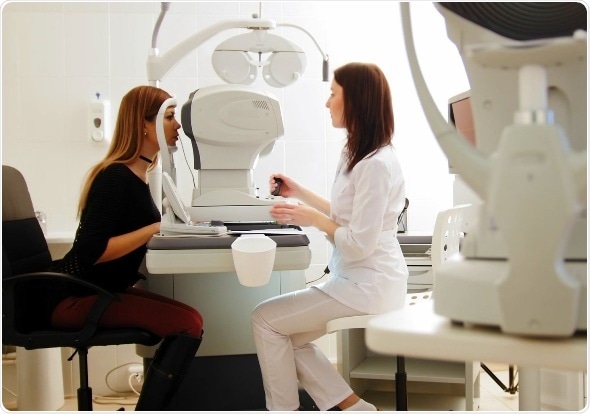Mar 6 2019
Scientists have developed a laser-based technique that can produce a full 3D image of all the layers of the retina, allowing doctors to better diagnose and treat eye diseases such as cataracts, diabetic retinopathy, and cancer. It will enable medics to take an image of the eye ten times faster and over ten times longer range than ever before, dramatically improving their ability to assess the condition of the eye and to ensure that nothing is overlooked.

Today, more than 10% of the world's population over the age of 60 has age-related macular degeneration which causes vision loss and leads to blindness. According to the World Health Organization (WHO): “285 million people worldwide are visually impaired: 39 million are blind, and 246 million have low vision. 80% of all visual impairment can be avoided or cured”. Early diagnosis and follow-up treatments are necessary to prevent eye diseases from turning into blindness.
However, early diagnosis is limited by the ability to make full 3D images of the eye. Eye specialists currently use a non-invasive imaging technique called OCT but, because the eye is continuously moving, it can only make partial images. Until now, this technology hasn’t been fast enough to take a full image of the eye.
Researchers from the Technical University of Denmark (DTU) have developed a swept light source technology that makes it possible to take full 3D OCT images of the eye and this innovative technology is being commercialized by the university spin-out company OCTLIGHT ApS. With support from Europe’s ‘one-stop-shop’ incubator for photonics innovation, ACTPHAST 4.0, OCTLIGHT has been able to solve a critical challenge in miniaturizing the packaging of this novel laser technology to meet commercial marketplace demands.
OCTLIGHT is now manufacturing these light sources to be used by medical technology companies in the commercialization of full 3D OCT imaging devices.
Dr Thor Ersted Ansbæk, CEO of OCTLIGHT said:
The field of vision and depth is critical to diagnosing diseases of the retina. Our technique allows you to image the whole eye from front to back in 3D. It scans faster so you can image a larger part of the retina. It allows you to image 150 degrees of the retina, and penetrates the eye, allowing you to see all the layers of the retina.”
They have developed a compact and cost-efficient light source module and processing capability that “sweeps” through the wavelengths of the optical spectrum faster than existing methods and has the ability of imaging deeper into tissue than ever before. The product addresses the challenges faced by medical devices companies in terms of finding a suitable laser technology for commercialization of 3D full eye imaging.
Ansbæk continued:
It’s a big leap forward for this type of technology and specially tailored for use in the devices that are used for diagnosing and treating eye diseases.”
Cataract surgery is one of the most performed operations in the West. Imaging the whole eye is critical with diseases such as cataracts where the lens becomes cloudy and has to be replaced. 3D full eye imaging will enable surgeons to work out what lens to use and plan the operation much more accurately than previously.
The company was founded in 2014 by a team of engineers and business people and has spent three years getting a detailed understanding of their customers and their requirements. Ansbæk was then a PhD researcher at DTU working with OCT and found there was an opportunity to develop a “sweep” technique where you could change wavelength very fast giving you a much more detailed image of the tissue you are studying.
To bring their idea to market, OCTLIGHT needed to create a product that was attractive to the medical technology companies who produce the devices used by doctors. ACTPHAST 4.0 is a photonics innovation hub designed to help SMEs, including those innovating with photonics for the very first time. It provided rapid access to the technical specialists and cutting-edge technologies in photonics that the team needed to develop the product, and also funded the innovation work.
“ACTPHAST is vital for a company like ours because it de-risks the investment we have to make to develop the product to a point where a potential customer will be willing to buy or invest themselves. ACTPHAST gave us access to the right know-how to accelerate bringing the product to market. They make a huge difference to companies like ours.”
“Working with them was easy, and we had an excellent experience. ACTPHAST seem like a well-oiled machine; they have a great process, are efficient, and not too bureaucratic. Their people are very helpful and great to work with.”
In addition, ACTPHAST 4.0 also helped OCTLIGHT to connect with venture capital by participating in its flagship annual European Photonics Venture Forum (EPVF) where high potential start-ups and SMEs innovating with photonics get to pitch to top VCs and corporate investors.
OCTLIGHT is currently scaling up their production and aims to grow to a team of 25 people and a turnover of more than €10 million within five years.
Source: http://www.octlight.com/